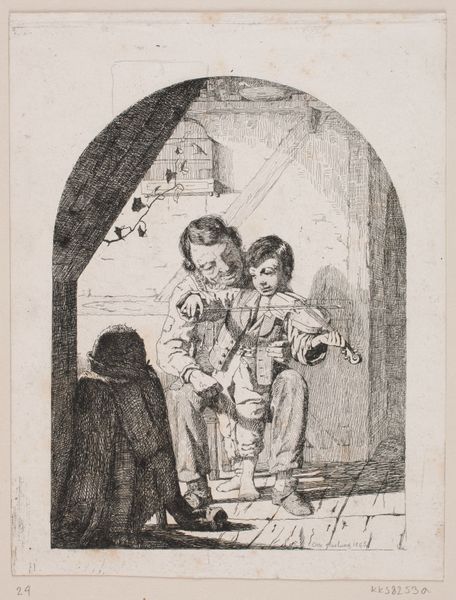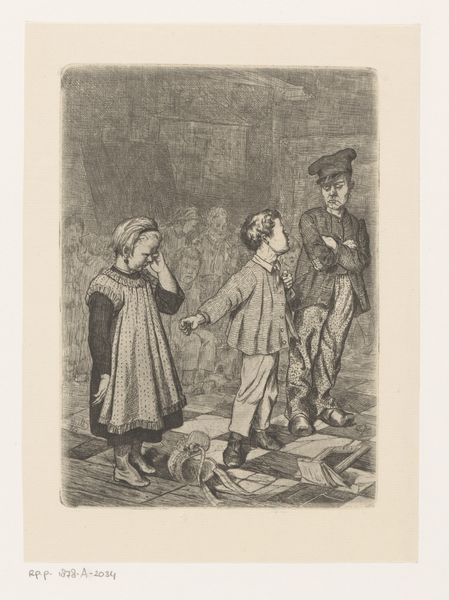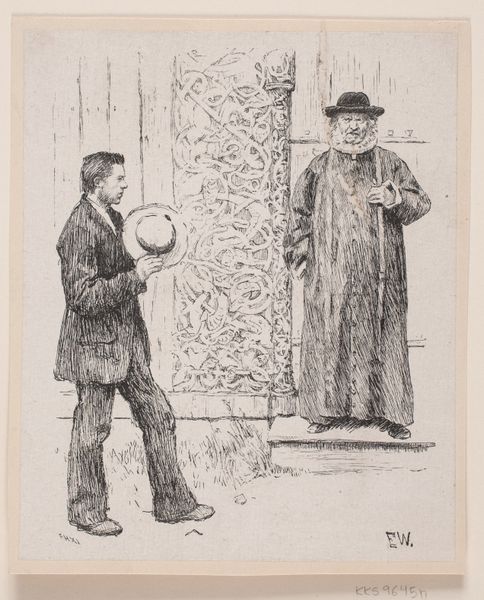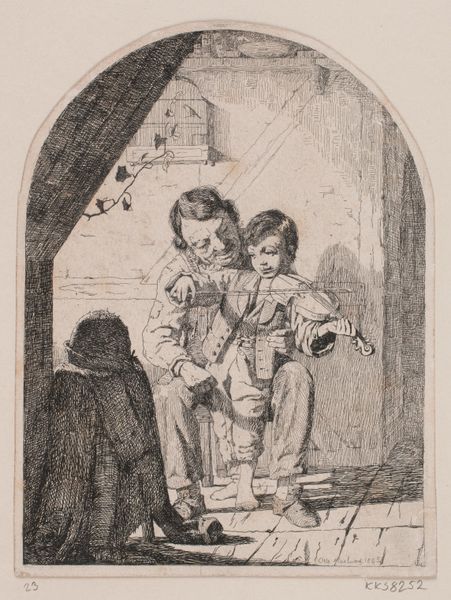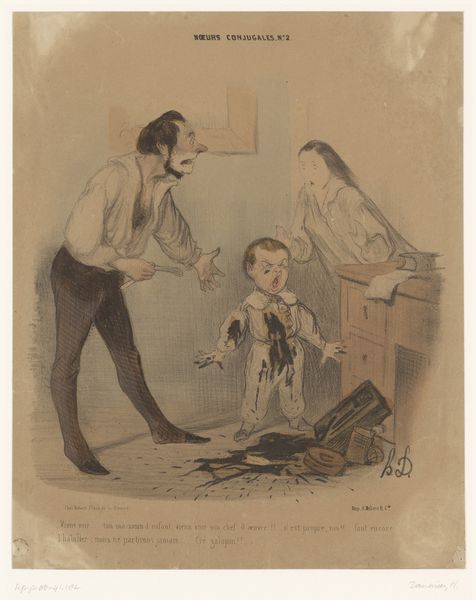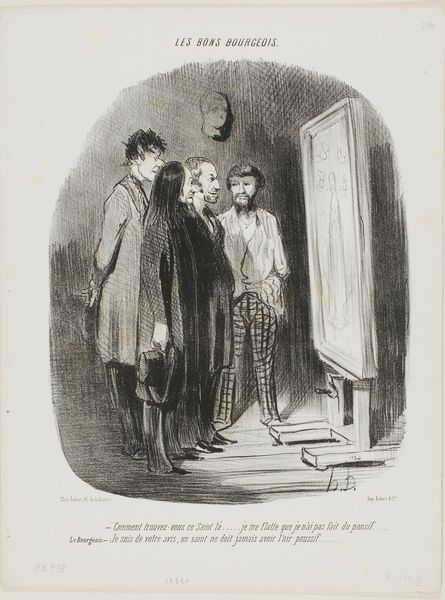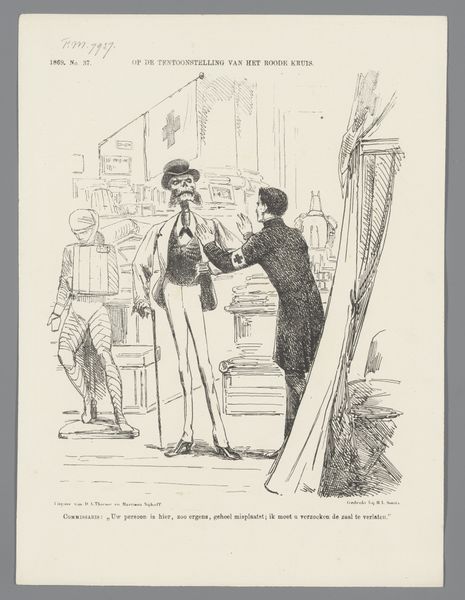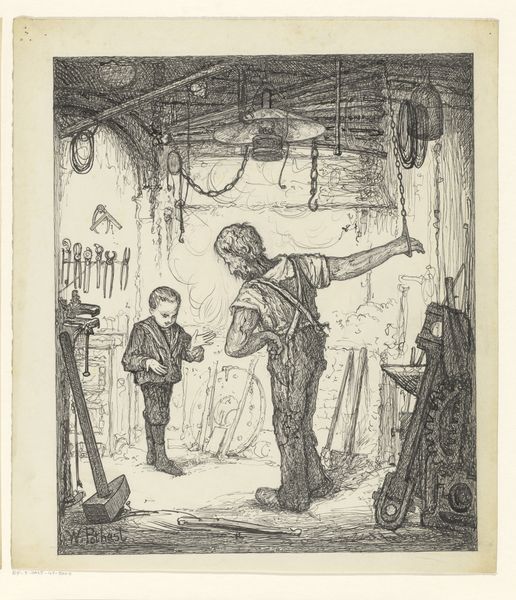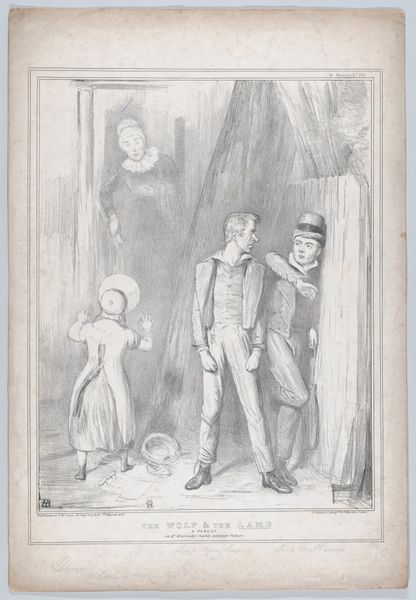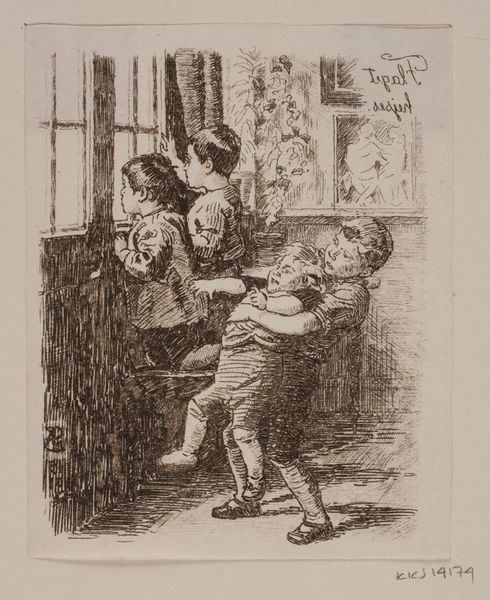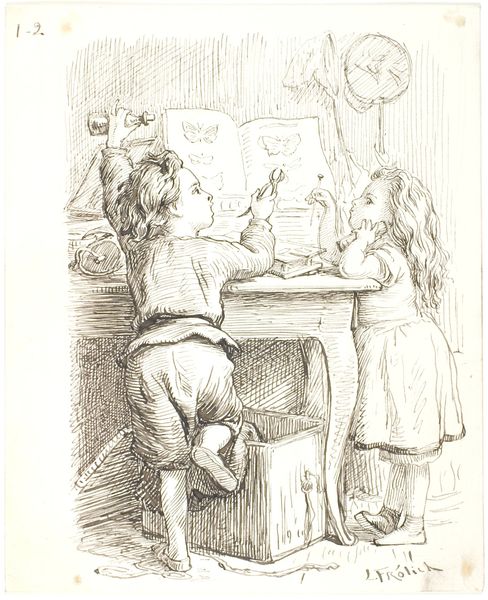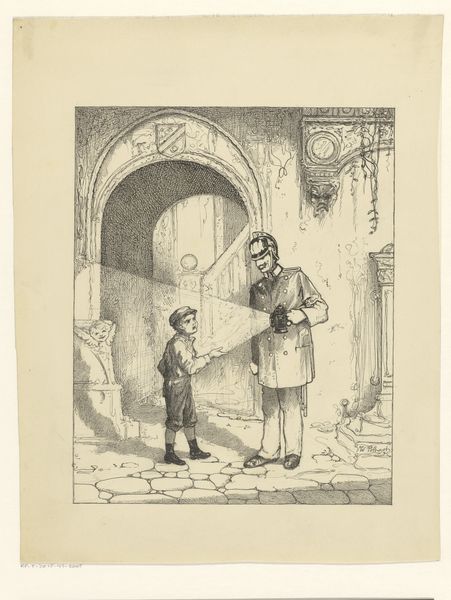
drawing, ink, pen
#
drawing
#
narrative-art
#
pen illustration
#
ink
#
pen-ink sketch
#
pen
#
genre-painting
#
realism
Dimensions: height 337 mm, width 261 mm
Copyright: Rijks Museum: Open Domain
Curator: Willem Pothast’s pen and ink drawing, "Jongens bij een man met schaatsijzers," created sometime between 1887 and 1916, captures a moment of everyday life. What’s your initial response to it? Editor: Immediately, I’m struck by its detailed execution, and how it brings a somewhat humble domestic scene to life. There's an intricate balance between the figures and the textures created by the linework. The controlled lines are fascinating, as they create an atmospheric depth to the scene, don’t you agree? Curator: Absolutely. Beyond its formal elements, the drawing evokes a sense of wonder, doesn't it? The man, seemingly middle-aged, presents these ornate ice skates to the young boys as if they were relics of great importance. Consider how skates functioned as both symbols of status and mobility within Dutch culture during this period, connecting personal narratives to broader social activities. Editor: I see what you mean, though one can view those objects formally, not merely for the history and symbolism attached to it. The details on those skates - note the exquisite detailing, with their baroque flair juxtaposed against the rustic setting and even the children's muted response. It makes the viewer think about time and history and memory. There’s something nostalgic here, a harkening back to earlier periods through objects. Curator: Agreed, the ornate quality is noteworthy in the overall composition. Pothast employs realism, yet injects a stylized quality in how light and shadow are handled; look at how shadow almost completely consumes parts of figures while also delineating their contours distinctly. That treatment also makes you focus your eyes on areas the author wanted to focus on and even obfuscate things. The symbolism transcends specific Dutch contexts by exploring more general themes of knowledge, legacies and even masculine inheritance. The man shows his treasure to those young boys. Is it also, perhaps, something he cherishes from his youth? Editor: Indeed, from a formalist perspective, there is a lot of sophistication in the construction. It draws the eye towards deeper historical and, perhaps even philosophical interpretations. Pothast's composition and deployment of cultural imagery provide, and almost certainly intentionally, offer a complex snapshot of a place where form informs iconographic reading—allowing narratives to unfold layer upon layer in front of our eyes! Curator: Very well articulated; it certainly encourages me to reconsider some assumptions. Editor: It seems we both found something intriguing to engage with here. Thank you.
Comments
No comments
Be the first to comment and join the conversation on the ultimate creative platform.

